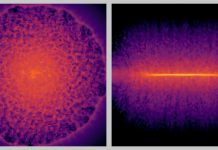
A major shift is happening in the creative world.
Thanks to powerful AI tools, anyone can now generate images, music, or writing in seconds.
But what does this mean for professional artists and content creators? A new study from Stanford University and UCLA gives us a glimpse—and it’s a mixed picture.
The research looked at what happened when a large online image marketplace started allowing AI-generated art.
Before this change, all images came from human artists, photographers, or designers.
But after the platform opened the door to AI in December 2022, everything changed. The number of images available soared, more sellers joined the site, and consumers seemed to love the new options.
At the same time, many human creators began to leave.
According to Stanford’s Professor Samuel Goldberg, the study shows that generative AI (or GenAI) is not just helping creators—it’s replacing them.
As Goldberg puts it, the AI is trained on human work, then produces images that people prefer, leading to fewer sales for human artists.
The platform saw a 78% jump in new images per month in markets that allowed AI content, and many of these new contributors were using AI tools. At the same time, non-AI creators fell by 23%, as many stopped selling their work on the platform altogether.
Interestingly, overall quality also improved, even for the human-made images. That’s because increased competition pushed weaker artists out, while stronger ones stayed and adapted. On top of that, AI art added more variety—it didn’t just repeat old styles or copy existing work.
Sales also rose by 39% after AI art entered the market. But here’s the catch: while more people bought images, they were often choosing AI art instead of human-made pieces. That means AI content is directly competing with—and replacing—human content.
For consumers, this may sound like good news: more choice, better quality, and lower prices. But for creators, especially those who rely on selling their original work, it’s a worrying trend. Goldberg warns that we could lose something valuable if human-made art gets pushed out.
“We believe human creativity is special,” he says, “so there’s a real concern that AI might take over these markets.”
Still, the researchers don’t think banning AI is the answer. Instead, they suggest we need fairer access to AI tools and better ways to support human artists.
After all, if AI is trained on human creativity, maybe those creators deserve a share of the value, too.



